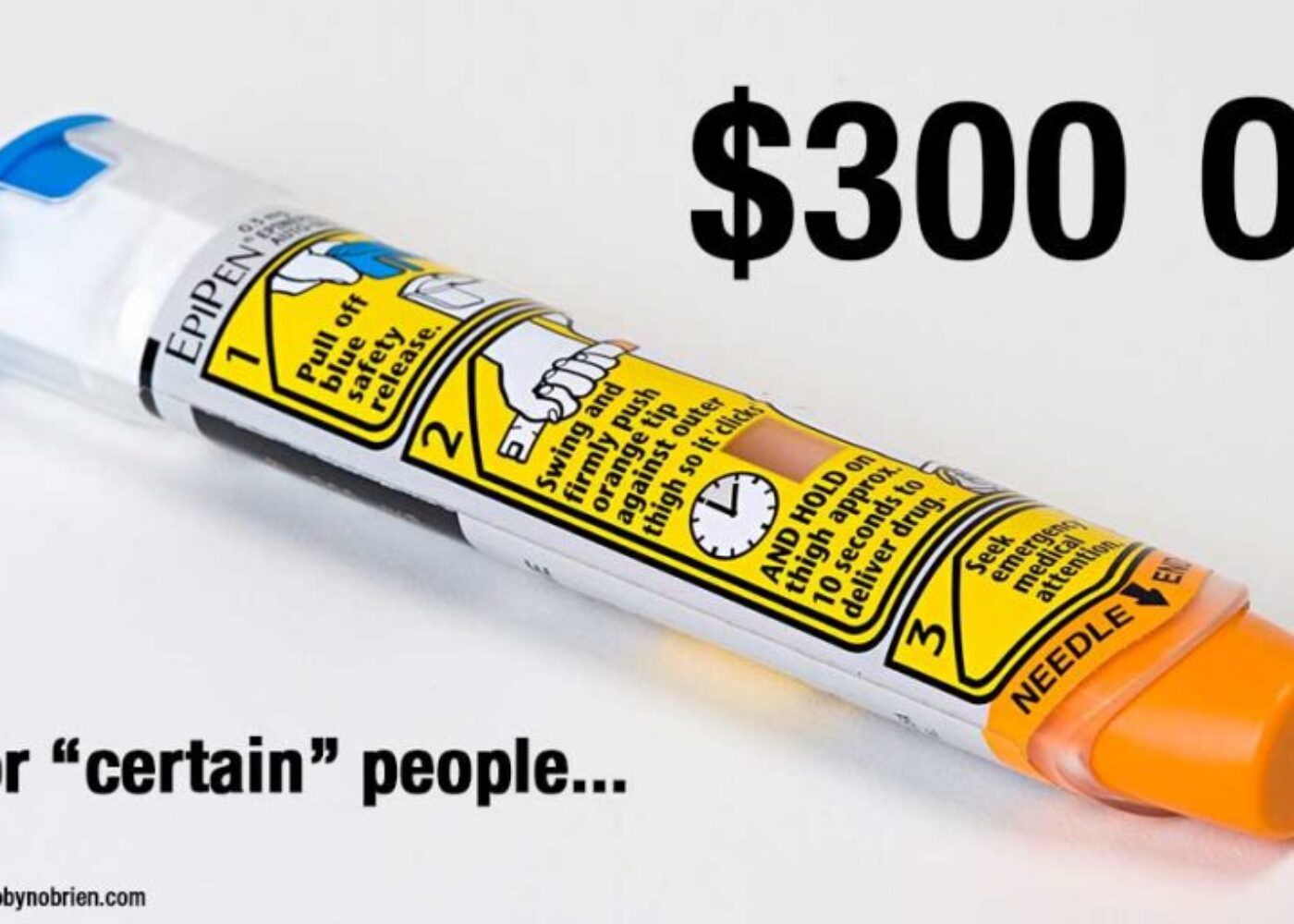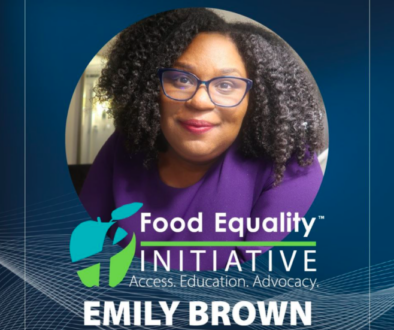Mylan’s EpiPen Olive Branch: Not Even Close to Enough

When we read Jill Negro’s article and learned that she was concerned about Mylan’s new “peace offering” to Americans outraged over the skyrocketing price of EpiPens (or “olive branch” as she calls it), we felt it was important to share her words. Please meet Jill, adjunct professor and mom of two.
I read in an article yesterday that Heather Bresch, CEO of Mylan, has called the EpiPen her “baby.” As a food allergy mom, the fact that she does so as CEO of a company that has the potential to save, and yet put the lives of my actual real life babies at risk, is ironic, to say the least.
It was then announced on HLN News that Mylan is planning on giving an additional coupon worth $300 to “certain people.” Further detail was reported on CNBC. I have to say that reading about the relief is, well, a relief. However, it will only help us if this coupon is per twin pack, rather than per prescription, and if it is available every year for the life of my two boys.
Also, who are the “certain people?” And importantly, it will also only help if the price does not continue its trajectory of 15-20 percent increases every quarter, every year, year after year. Mylan has additionally promised to double the eligibility for patient assistance. I would ask that Bresch please consider that while $97,900 for a family of four is a lot of money in many parts of the country, here in Connecticut, where the cost of living is among the highest in the world, it still may be a struggle for families, particularly those like myself with multiple school age children who need EpiPens, in a multitude of places—at camp, at school, for sports, and home.
The coupon also does not appear to account for the fact that fully insured plans will pick up the full tab without subsidy, resulting in higher premiums for those lucky enough to have the pens still covered by insurance, and that taxpayers are on the hook for families who get them through Husky in Connecticut and Medicaid.
I do not believe a temporary coupon, while it does potentially appease the masses in terms of the media uproar, and provides potential temporary relief for my family, is not an effective solution to a long-term problem. Instead, it is further adding to the expense of companies who pay their own claims, if they are self-funded (likely affecting workers’ wages), or the government, (and therefore, us, as taxpayers), or insurance companies—thus, bringing the cost right back to consumers with food allergies in the form of higher premiums—and reduced wages. By the law of economics, in a country of public health companies beholden to their shareholders as opposed to the people actually using the products or services, increasing healthcare costs ultimately always come back to taxpayers and consumers.
We all know food allergies are rising at an alarming rate, and Mylan has continued to increase EpiPen prices each quarter, year after year. When will it end? Clearly, this is a growing problem. Bresch is placing 99 percent of the blame on healthcare insurance, which is not accurate or fair. She has repeatedly said that deductibles have gone up “overnight.” Not true. Our family deductible has been $5,000-6,000 since 2011, and actually has gone down to $5,200 with my husband’s latest job change. I have personally had a high deductible plan since 2005. I would hardly call a span of 11 years “overnight.”
Having worked in the insurance industry for several years prior, I can say with absolute authority that there has been a push toward consumer driven healthcare — shifting more of the cost to consumers — for years. President Bush passed Health Savings Accounts (HSAs) into law in 2003. We cannot blame this on Obamacare, or high deductible plans, or anything other than greed, quite frankly. Because whether I pay the bill or insurance pays the bill or Medicaid pays the bill, the money is coming from somewhere. Mylan cannot simply charge whatever they would like and say “it’s OK, insurance/Husky/Medicaid/schools/EMTs are picking up the tab.”
Conversely, insurance companies, most of which are public, are also bound to their shareholders, and thus cannot have these prices interfere with rising profits. Do you see the problem? Again, whether it comes out of my pocketbook or not we are ALL paying for it.
Also, if this is really the hardship on Mylan as Bresch is now claiming, why has her salary risen to $18 million, annually, in the same period of time that the EpiPen price has skyrocketed? Or why has Mylan’s profit, 40 percent of which is based on EpiPens, risen to $1.3 billion, also annually, and also within the same time period?
She said part of the cost is enhancements. What enhancements have there been? She said the cost is partly due to spreading awareness and by giving free EpiPens to schools. But is that cost being billed back to my family? It seems, indeed, it is. So while Mylan gets the glory of “free EpiPen” publicity, we are the ones footing the bill. She says there are four to five touch points of middlemen who need to make money, but hasn’t spelled out who exactly these middlemen are.
I could hardly believe when I got the call Monday from Washington D.C. asking if Sen. Richard Blumenthal could reference my story in a letter to Mylan. Equally so when the call came later asking me to speak at a press conference. How could I say no? It’s not that I couldn’t believe they wanted to talk to me, it was intense relief that I was finally being heard.
While EpiPen price gouging has been in the press the past week or so, it is not a new issue to my family. See, I have two little boys. Bradley is 4 and Jeremy is 2. Bradley and Jeremy both have food allergies, diagnosed after reactions at only 11 months old and 13 months old, respectively. They both have had multiple reactions.
Because we have a high deductible health plan we pay thousands for Epipens each year. But the financial burden of continuing to do so is becoming unbearable for our family. We’ve paid $2,000 this year alone, with the bare minimum two twin packs for each child—one at home and one at school. The price of our last refill in June this year was $599 per twin pack.

I called the exact same pharmacy, our town CVS, on Tuesday to try to budget for our cost once these expire in less than a year. I was quoted $734.94, per twin pack. Remember, we need two for each child, minimum. According to CVS, the cost would be $2,939 or $2,839 with the “$0” coupon Mylan promotes as making the pens virtually free for all.
This for a device that, by all accounts, costs approximately $1 to manufacture, and was only $57 to purchase only a short time ago when Mylan bought the generic division from Merck.
It gets worse. I also learned once my boys start school, they will require a separate twin pack for any sports or activities. And even a separate twin pack for before- and after-school care. This brings our cost, at bare minimum, to $5,000 or more per year. And this is assuming we don’t actually use any of the Epipens. And, again, that Mylan does not continue their trend of up to 20 percent quarterly increases.
In fact, I was quite upset when I read Mylan’s comment that “most” consumers pay $0 for their pens, due to this awesome coupon—which has a $100 maximum value. This does very, very little to help my family, nor many of my friends’ families, nor the millions of families with high deductible plans.
The latest statistics show that 52 percent of employee-based health plans have high deductibles, and 90 percent of individual plans, including those in the American Affordable Care Act exchanges have high deductibles. And while this is by no account new, as Mylan would like us to believe, the trend is rising. The point being that this is not just my family’s story, but countless others. Since I have posted this on my Facebook page on Tuesday, six different people have told me that they have not filled their EpiPens. They will do so for their children (and I suspect that Mylan knows this, and is why it is such an important point that they are taking advantage of that fact), but not for themselves.
I think it is important to reiterate that we have had a high deductible plan for more than 10 years, so this is not a new, but an increasingly unbearable problem. Yet, what are people like me, with two children with life-threatening food allergies and high deductible plans, who are not also independently wealthy, going to do?
I am ashamed to say, like many, many moms have since admitted to me, that I have kept expired EpiPens to use at home. We do not have much of a choice. Last year, we used a significant portion of our savings to pay for them. This year, I will be forced to use some of my retirement money. But the government only allows a one-time rollover from an IRA to an HSA per lifetime for a family. I am using mine now. I have no idea what we will do next year. Or the year after that. Or the year after that…
We are a young family. I am a stay-at-home mom and a part-time teacher. While we are close to Mylan’s patient assistance threshold, as Connecticut residents in a fairly modest home, we make just enough to pay our expenses, with quite little left over, if at all, and months of unexpected expenses, a car repair here, a house repair there, leaves us behind and dipping into limited savings.
My oldest son, Bradley, also has asthma, and my youngest, Jeremy, has an airway defect and aplasia cutis congenita. He’s had three surgeries so far and he is only 2 1/2. My husband also survived an aortic aneurysm recently and has a lifelong medication to keep him alive. I bring this up because our medical expenses will be high regardless. I have come to accept that. What I do not, and will not, accept, however, is arbitrarily raising life-saving drug prices beyond what we and most families can afford.
A mother wants to do everything she can to protect her child. Leaving my 2-year-old and my 4-year-old children vulnerable to life-threatening allergies without a having a device close by that may potentially save their lives is unthinkable. My question to Mylan is, what would you like my family to sacrifice next so that you may keep up with your $1.3 billion annual profits? Do we sacrifice feeding or clothing our children? After all, I suppose if we cannot afford to actually feed our children, we do not have to worry about their food allergies. Or do we potentially sacrifice the lives of our children? That is the choice they are forcing many of us to make.
Arbitrarily raising prices 450-600 percent since purchasing the product is putting the lives of my children at risk because it is what my family, and most families with high deductible health plans can afford. If the people at Mylan read this, I am asking you to do the right thing because the lives of my beautiful little boys are in your hands.
While I appreciate the olive branch of a $300 coupon, will it last? Will it apply to us? Is it enough?
Originally published at CTViewpoints and reposted with permission.


